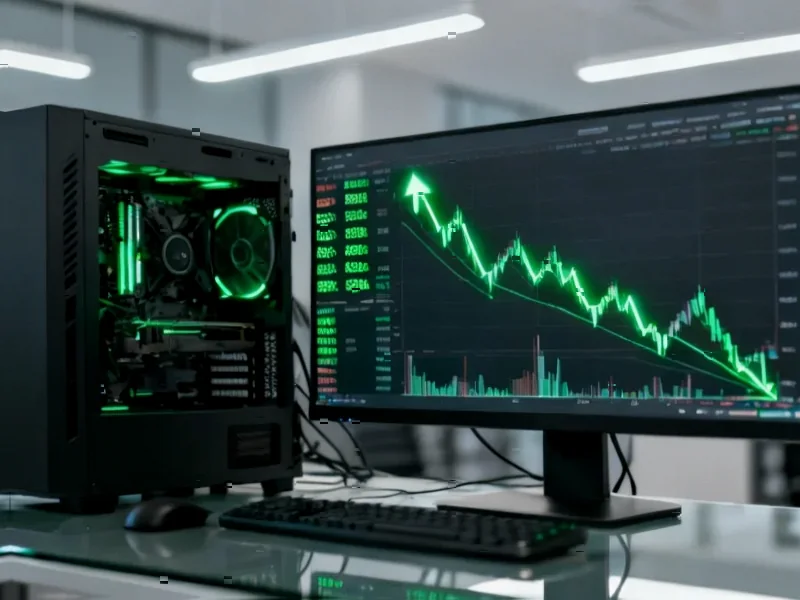According to CNBC, Monday’s analyst calls revealed significant upgrades and price target increases across multiple sectors, with particularly aggressive moves in technology stocks. Loop Capital reiterated Nvidia as a buy while raising its price target to $350 from $250, citing expectations that GPU shipments will essentially double over the next 12-15 months. UBS upgraded Cisco to buy, citing “AI infrastructure demand” as a key driver, while Wedbush raised its Palantir price target to $230 ahead of earnings, calling the company an “AI juggernaut.” Other notable moves included Deutsche Bank raising Tesla’s price target to $470 ahead of this week’s shareholder vote, Piper Sandler upgrading Roku to overweight with a $135 target, and Wells Fargo boosting JPMorgan’s target to $350. The breadth of upgrades suggests growing confidence across both technology and traditional sectors as analysts position for sustained growth.
The AI Infrastructure Arms Race Intensifies
The most striking pattern in these analyst moves is the overwhelming consensus around AI infrastructure as the dominant investment theme for the coming years. What we’re witnessing isn’t just typical tech sector optimism—it’s recognition that we’re in the early innings of a multi-year capital expenditure cycle that will fundamentally reshape corporate IT spending. The doubling of Nvidia’s projected GPU shipments that Loop Capital references represents an unprecedented scaling of compute capacity that will ripple through data centers, cloud providers, and enterprise IT budgets globally. This isn’t merely about AI software applications anymore; we’re seeing the hardware foundation being laid for what could become a $1 trillion AI infrastructure market by the end of the decade.
Beyond Tech: The Broader Market Recovery Story
What makes this wave of analyst optimism particularly noteworthy is how it extends well beyond the usual technology suspects. The upgrades in sectors like commercial laundry (Alliance Laundry), education (Phoenix Education Partners), and real estate (Kilroy Realty) suggest analysts see a broad-based economic recovery taking hold. When traditionally conservative firms like Wells Fargo are boosting targets for banking giants like JPMorgan while simultaneously upgrading energy plays like Antero Resources, it signals confidence in multiple economic engines firing simultaneously. The energy sector upgrades specifically point to expectations of rising industrial demand and datacenter power needs, which directly complement the AI infrastructure narrative.
Risk Assessment and Realistic Outlook
While the bullish sentiment is palpable, experienced investors should approach some of these projections with appropriate caution. The concentration risk in AI-related stocks is becoming increasingly pronounced, with multiple analysts essentially making the same bet on the same thematic drivers. History shows that when Wall Street becomes this uniformly optimistic about a specific theme, it often precedes a period of consolidation or correction as reality fails to match the most aggressive projections. The timing is also noteworthy—many of these upgrades come ahead of earnings season, suggesting analysts are positioning themselves rather than reacting to concrete results. The true test will come when companies either validate these optimistic projections or fall short of what has become increasingly elevated expectations.
Strategic Implications for Investors
For investors navigating this landscape, the key insight isn’t necessarily to chase every upgraded stock, but to recognize the structural shifts these analyst moves are signaling. The simultaneous optimism across AI infrastructure, energy, financials, and consumer staples suggests we may be entering a period where traditional sector correlations break down. Companies that can demonstrate tangible AI-driven revenue growth—not just cost savings—will likely command premium valuations. Meanwhile, the upgrades in more defensive sectors like healthcare (Edwards Lifesciences) and consumer staples (Costco) indicate that analysts are still hedging their bets, suggesting that while the AI story is compelling, a balanced portfolio approach remains prudent given the macroeconomic uncertainties that persist.




